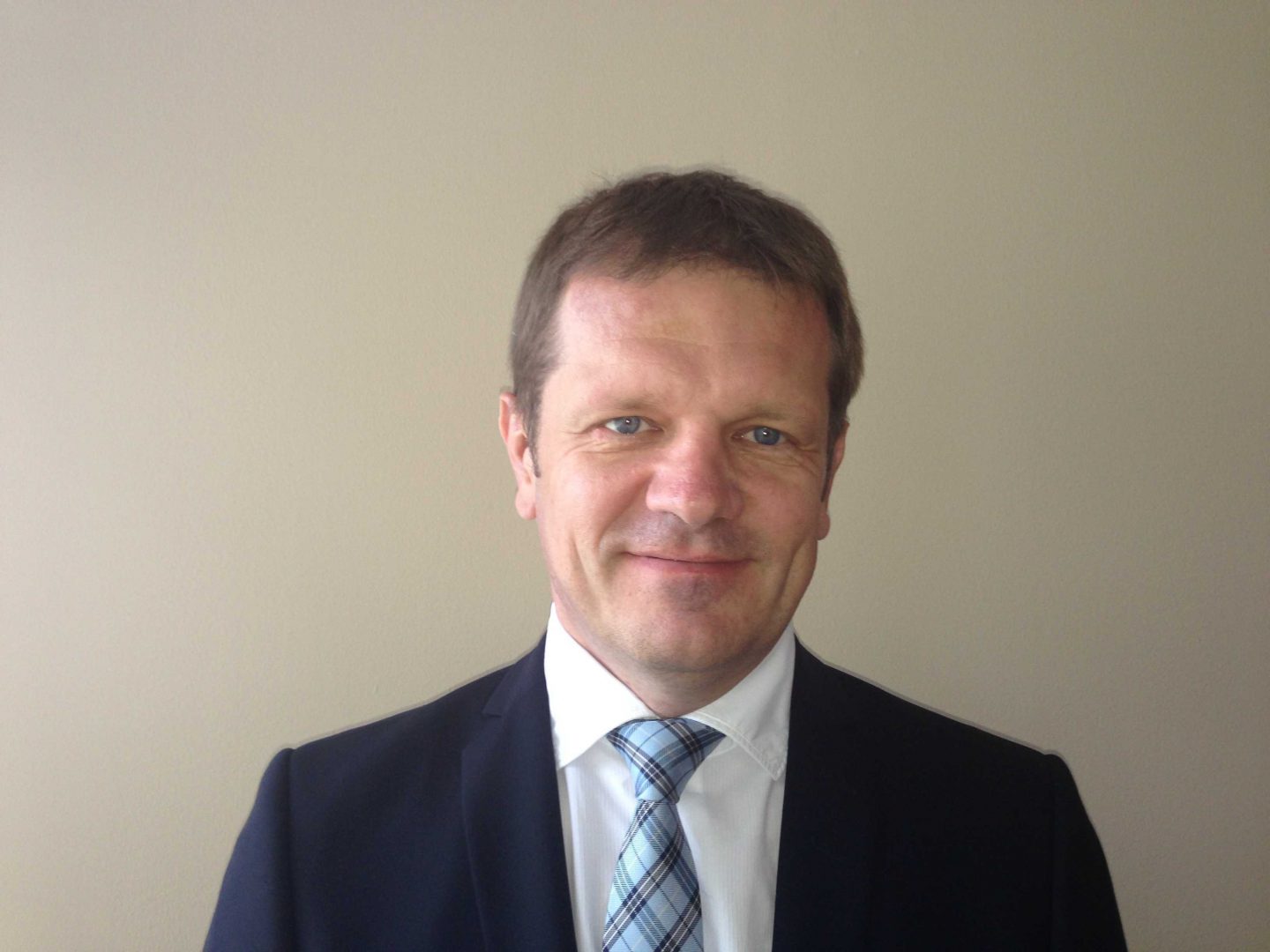His Excellencey Peter Kmec has served as the Ambassador of Slovakia to the U.S. since September 2012. He was appointed to his first ambassadorship in 2007, serving as Slovakia’s ambassador to Sweden from August 2007 to July 2012.
Come visit the Embassy of Slovakia on May 13 as they particpate in the annual EU Open House. Meet the Ambassador and other staff members, learn more about Slovakia and the work that embassy does, enjoy folk music and dance perofrmances and discover Slovak culture and art.
The embassy is located at:
3523 International Court NW
Washington D.C., 20008
For more information on Ambassador Kmec and the Embassy of Slovakia, please visit: www.mzv.sk/web/washington-en/home

Q: What are the current trends in the trade relations between U.S. and Slovakia? Where do you see more potential for cooperation?
Slovakia is a small, open and export oriented economy and supporting trade and investment is one of the key tasks of our economic diplomacy abroad. The volume of our trade with the U.S. has been growing steadily and currently the turnover is some 2.5 billion USD with trade surplus on our side. Even though the vast majority of our export in terms of volume remains in the EU (around 85%), the U.S. market is becoming increasingly attractive for our companies, especially in the sector of innovation.
The U.S. represents a leading force in innovation with a highly competitive startup ecosystem. Several Slovak companies have already succeeded in harvesting this potential from antivirus software companies to military simulators and training systems to cutting edge technologies for sports arenas.
Q. What is the Slovakian embassy in Washington, DC doing to promote trade and cooperation in the area of research
and development and innovation?
Our role is to help promote the connections between Slovak innovative potential and the U.S. partners. In order to help build even stronger economic links between Slovakia and the U.S., a new body has recently been established – the Slovak American Business and Innovation Council (SABIC). It sends a clear message to our U.S. partners that we are serious in supporting business and innovation.
The SABIC reflects the growing demand from U.S. businesses active in Slovakia and Slovak businesses entering the U.S. market for a permanent business and innovation focused platform based in the United States. The main goals of the new organization are to promote the commercial activities and investments between the U.S. and Slovakia and to support Slovakia’s startup ecosystem by fostering bilateral exchange and to engage the Slovak-American professionals in this process.
We also cooperate with other organizations such as the Slovak American Foundation that bring top startups from Slovakia to the U.S. to help them develop their business.
Q: What are the main challenges in the EU/US relations from the perspective of the Slovak EU presidency?
Slovakia took over the Presidency of the Council of the European Union on 1st July after 12 years of membership in the EU. It represents the fulfilment of our integration ambitions and serves as a symbol of the successful transition of our country which today finds itself at the core of the European integration and is actively shaping the EU policies.
The underlying priority of the Slovak EU presidency is boosting the EU potential and stimulating growth, jobs and competitiveness. In this context, the EU single market is the key achievement of the Union and the most effective instrument for creating jobs.
The second half of 2016 is also crucial in the context of finalizing the negotiations on TTIP. Even though the current
political realities on both sides of the Atlantic are not making the conclusion of TTIP easy, we have made a substantial
progress which we can build on.
One recent achievement is the agreement on the so called “privacy shield” which allows for the continuation of data flows between EU and U.S., which is often identified as a top priority by many U.S. businesses.
Q: What are the major industry sectors in the Slovakian economy?
The strong industrial heritage and developed infrastructure has led to a booming manufacturing industry with Slovakia being one of the fastest growing economies in Europe. Foreign direct investment, especially in the automotive and electronic sectors, fueled much of the growth. With a production output of over a million cars per year, Jaguar Land Rover is the most recent investor to join a group of foreign companies, including Kia, Peugeot and Volkswagen.
The major industry sectors are automotive, engineering and electro-technical. Industry share currently stands at 23% of
GDP and affects one third of jobs in Slovakia. Although we recognize the importance of the traditional industries, we are aware of the risks of becoming too dependent on only one or few export items such as cars. In the recent years we have worked hard to reinvent the economy and focused on the potential of innovation and technology.
Q: What are the new areas for innovation in the Slovakian economy?
We have a solid industrial base and this is what we are building on. So the main driving force in our innovation is in the transport/automotive industry, mechanical and electrical engineering, technological research and nanotechnology. It was in fact the concept of AeroMobil – the flying car, which had enormous success at the SXSW festival a year ago. This year at the same festival the Hyperloop Transportation Technologies announced the intention to start their amazing project of tube travel in Slovakia.
The ICT sector is increasingly becoming another pillar of the Slovak economy. The city of Košice is commonly referred to as “IT Valley”, a cluster with almost 40 IT companies, with a top engineering talent pool, well-developed education
system and workforce that is fluent in English. Biomedicine and biotechnology are another area of concentration.
Q: How is Slovakia mobilizing its resources in order to shift its economic growth from efficiency-driven to innovation-driven economic growth?
Slovakia needs to improve its performance in the area of high-tech demanding industries, which requires intensive research and development and a highly skilled workforce. One of our challenges is to advance the cooperation between private companies and universities especially in the area of R&D. Better connection and communication between these two bodies can lead to more usable results for businesses while presenting new research approaches for universities. In Slovakia we are working on new incentives to provide support and network for deeper and balanced cooperation of private and public research to achieve a greater level of knowledge transfer.
Domestically we have taken some steps and adopted innovation friendly legislation and initiatives such as the concept for support of startup ecosystem. It goes without saying that efficient financing mechanisms are equally important including the concept of Public Private Partnerships and making good use of available EU funds.
Q: The embassy is hosting a concert here in the RRB/ITC to celebrate the Slovak presidency of the European Union. What culture initiatives has the embassy showcased during this period?
Triango is a unique project of the well-known Slovak pianist, composer and conductor Peter Breiner, the fantastic jazz violinist Stano Paluch and outstandingly versatile accordionist Boris Lenko. The latest music project of Triango is The Slovak Dances – jazz adaptations of Slovak folk songs. Also, as a part of the Slovakian National Day celebration, the Embassy opened the unique exhibition of the Slovak photographer Jaroslav Horecny “Houses of Čičmany”. The typical Slovak village Čičmany is famous for its original log houses with the typical white ornamentation.
Additionally, the embassy presented two concerts of the renowned Slovak jazz singer, Hanka Gregusova. This project is connecting two different cultures and jazz interpretation approaches – Slovak and American. During her concert, she was accompanied by one of the best U.S. jazz musicians Anthony Wonsey on piano, Kris Funn on double bass and John Ramkin on drums.
*Interview was excerpted from TradeWinds Vol. 15
Share this Post

